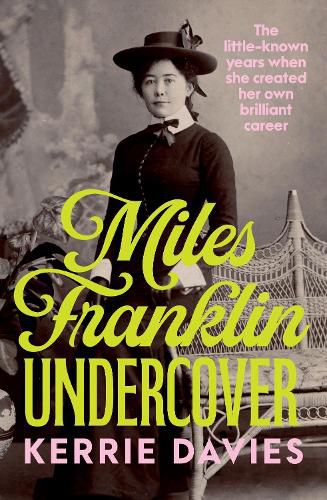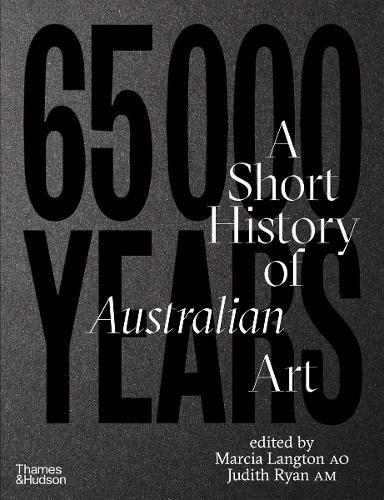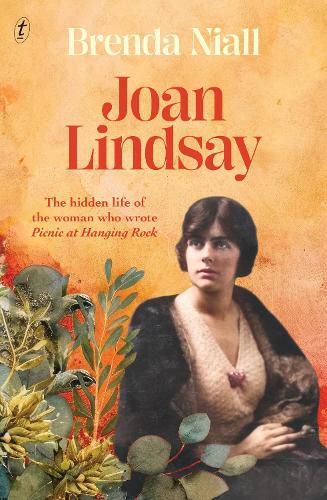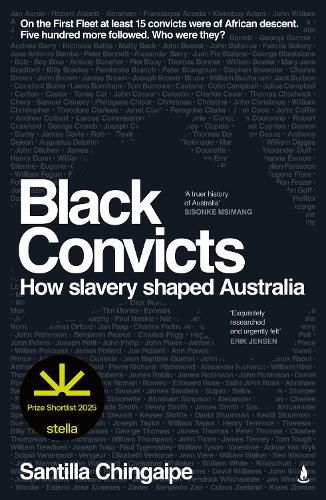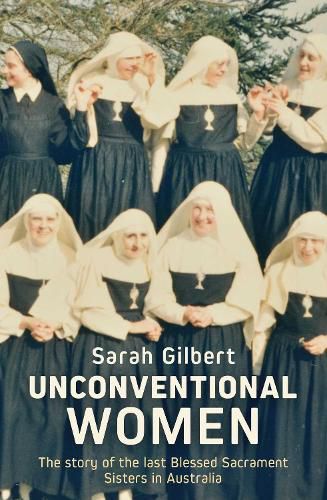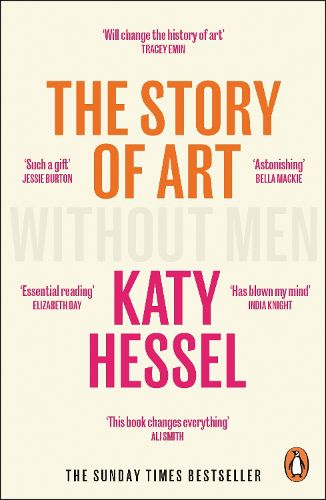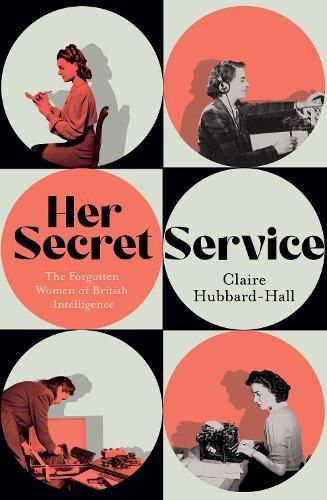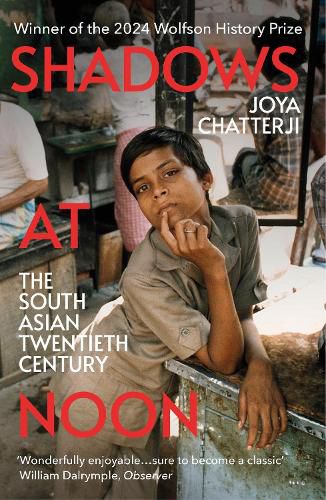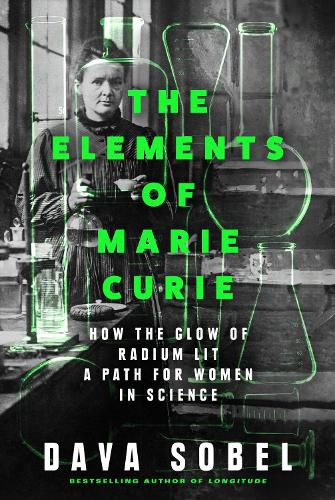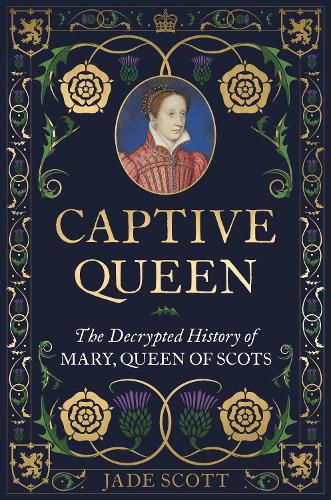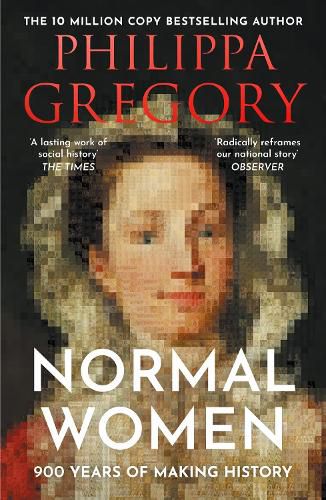Given March is Women's History Month and the 8th is International Women's Day, we figured there's no better time to celebrate great history writing from women! Here are our top picks of insightful history books from talented writers, both Australian and international.
Miles Franklin Undercover
Kerrie Davies
She dazzled Australia with her rebellious novel My Brilliant Career, inspiring generations of young women chafing under conventional expectations. Only 21, Miles Franklin was lauded as the Bronte of the bush, and feted by the rich and influential.
But fame can be deceptive. In reality, the book earned her a pittance. The family farm was sold, her new novels were rejected, and she was broke. Just two years after her debut, Miles disappeared.
Now, Kerrie Davies uncovers a little-known period in Miles' life, from the servant's quarters of Sydney and Melbourne's wealthy houses to volatile Chicago, in the turbulent years after her early success. Davies draws on a never-before-published manuscript and diary extracts from Miles' year undercover as a servant, intimate correspondence with poet Banjo Paterson, and archival sources from Australia and Chicago.
Miles Franklin Undercover is a powerful story of a young woman's enduring resilience, and her determination to always be her own heroine.
65,000 Years: A Short History of Australian Art
Marcia Langton, Judith Ryan
Long before Britain's invasion of Australia in 1788, First Peoples' cultural and design traditions flourished for thousands of generations. Their art shaped the continent as we know it today and the societies that thrived here; but these continuing artistic practices and new art forms were disregarded by the settlers, and not considered to be 'fine art' until the late 1980s.
In this publication, twenty-five writers urge us to reconsider the art history that is unique to the Australian continent and to acknowledge its rise to prominence in modern times. Featuring new writing by leading thinkers across generations and disciplines, it celebrates Indigenous Australian art across media, time and language groups.
The Women of Little Lon
Barbara Minchinton
Sex workers in nineteenth-century Melbourne were judged morally corrupt by the respectable world around them. But theirs was a thriving trade, with links to the police and political leaders of the day, and the leading brothels were usually managed by women.
While today a popular bar and a city lane are famously named after Madame Brussels, the identities of the other ‘flash madams’, the ‘dressed girls’ who worked for them and the hundreds of women who solicited on the streets of the Little Lon district of Melbourne are not remembered.
Who were they? What did their daily lives look like? What became of them? Drawing on the findings of recent archaeological excavations, rare archival material and family records, historian Barbara Minchinton brings the fascinating world of Little Lon to life.
Read our staff review here.
Joan Lindsay
Brenda Niall
Joan Lindsay’s Picnic at Hanging Rock has captivated and perplexed generations. But the woman behind the novel is as much an enigma as the disappearance of the fictitious schoolgirls and their teacher.
Joan Lindsay, wife of painter, art entrepreneur and National Gallery of Victoria director Daryl Lindsay, sacrificed her own artistic talent in deference to her husband, as was the order of the day. She painted landscapes with skill, but gave it up; wrote plays and novels of little merit; took routine journalism commissions for much-needed funds; and happily played hostess to guests including Dame Nellie Melba, Laurence Olivier and Vivien Leigh, as well as Keith and Elisabeth Murdoch and Robert Menzies – all the while giving no indication of the literary brilliance that would emerge late in her life.
Was Joan really the dutiful wife, or was she patiently waiting her chance? Was Picnic at Hanging Rock a burst of creativity in response to a life held in check? Or did something happen behind the carefully curated scenes that gave rise to her extraordinary novel? Brenda Niall explores these questions and more in an engaging and surprising portrait of a fascinating Australian woman.
Black Convicts: How Slavery Shaped Australia
Santilla Chingaipe
The story of Australia’s Black convicts has been all but erased from our history. In this deeply researched and illuminating book, Santilla Chingaipe offers a fresh understanding of this fatal shore, showing how empire, slavery, race and memory have shaped this nation.
On the First Fleet of 1788, at least 15 convicts were of African descent. By 1840 the number of Black transportees had risen to over 500. But although some of these lives were documented and their likenesses painted, their stories have been erased from history: even their descendants are often unaware of their ancestry.
In these stories spanning Africa, the Americas and Europe, Black Convicts also uncovers Australia’s hidden links to slavery, which both powered the British Empire and inspired the convict system itself. Situating European settlement in its global context, Chingaipe shows how the injustice of dispossession was powered by the engine of labour exploitation.
Read our staff review here.
Unconventional Women
Sarah Gilbert
In the 1950s and 60s, six young women left their families to join a strictly enclosed order of nuns in Melbourne. They could leave the convent only for medical appointments and rarely received visitors, who they would meet from behind a partition built into the parlour. Their lives were confined by the convent walls, the rhythms of the Divine Office and the dictates of the Mother Superior.
By the late 1960s, this community of women was upended by the reforms of the Second Vatican Council, and by the changing times. Their convent threw open its doors on a new world and the women wanted to be part of it.
The personal accounts of the six nuns and ex-nuns in Unconventional Women are unusually candid, giving a rare insight into the world of the convent, and exploring their changing relationship with both God and the world.
Naku Dharuk: The Bark Petitions
Clare Wright
In this engaging narrative, Wright follows the story of petitions on bark created by the Yirrkala community in Arnhem Land in 1963, protesting bauxite mining on traditional lands.
Throughout the tumultuous year of 1963, leaders of the Yolngu clans worked with white allies on the unprecedented political strategy that culminated in the presentation of four Bark Petitions to Federal Parliament. It was a key moment in the formation of a uniquely Indigenous engagement with Australian politics.
This is the story of a founding document in Australian democracy and the people who made it. It paints a vibrant picture of the profound and ancient culture of Australia's first peoples, in all its continuing vigour.
The Story of Art without Men
Katy Hessel
How many women artists do you know? Who makes art history? Did women even work as artists before the twentieth century? And what is the Baroque anyway?
Discover the glittering Sofonisba Anguissola of the Renaissance, the radical work of Harriet Powers in the nineteenth-century USA and the artist who really invented the Readymade. Explore the Dutch Golden Age, the astonishing work of post-War artists in Latin America and the women artists defining art in the 2020s. Have your sense of art history overturned, and your eyes opened to many art forms often overlooked or dismissed.
From the Cornish coast to Manhattan, Nigeria to Japan, this is the history of art as it's never been told before.
Her Secret Service
Claire Hubbard-Hall
Since the inception of the Secret Service Bureau back in 1909, women have worked at the very heart of British secret intelligence – yet their contributions have been all but written out of history.
From encoding orders and decrypting enemy messages to penning propaganda and infiltrating organisations, the women of British intelligence played a pivotal role in both the First and Second World Wars. These true custodians of Britain's military secrets include Kathleen Pettigrew, personal assistant to the Chief of MI6 Stewart Menzies, who late in life declared 'I was Miss Moneypenny, but with more power', to Jane Archer, the very first female MI5 officer, and Winifred Spink, the first female officer ever sent to Russia in 1916.
Drawing on private and previously classified documents, Hubbard-Hall rescues these women from obscurity, bringing their gripping stories to life to provide a definitive account of women's contributions to the history of the intelligence services.
Shadows at Noon
Joya Chatterji
This book tells the story of South's Asia's twentieth century in eight chapters. Unlike standard narrative histories of the subcontinent that concentrate exclusively on politics, here nature, objects, technologies, cultures, and people's changing relationships to them and to each other, are central preoccupations.
Shadows at Noon is a bold and innovative work that pushes back against standard narratives of 'inherent' differences between India, Pakistan and Bangladesh. The purpose of the book is to make contemporary South Asia intelligible, while sharing with the reader its infinite colour and excitement. The book does not talk down to the reader or attempt to simplify the history of a vast, and almost mythically intricate, society.
The Elements of Marie Curie
Dava Sobel
For decades Marie Curie was the only woman in the room at international scientific gatherings, and despite constant illness she travelled far and wide to share the secrets of radioactivity, a term she coined. She is still the only person to win a Nobel Prize in two scientific fields.
Her ingenuity extended far beyond the laboratory walls; grieving the death of her husband, Pierre, she took his place as professor of physics at the Sorbonne, devotedly raised two daughters, drove a van she outfitted with x-ray equipment to the front lines of World War I, befriended Albert Einstein and inspired generations of young women to pursue science as a way of life.
Approaching Marie Curie from a unique angle, Sobel deftly illuminates the trailblazing life and enduring influence of one of the most consequential figures of our time.
Holding the Line
Barbara Kingsolver
From the multi-million copy bestselling author of Demon Copperhead: a true story of female-led resilience during the Great Arizona Mine Strike of 1983.
It was the summer of 1983. Barbara Kingsolver had a day job as a scientific writer spending weekends cutting her teeth as a freelance journalist when she landed an assignment. Her mission was to cover the Phelps Dodge mine strike.
Over the year that followed, Kingsolver stood with those miners and their families, increasingly engaged and heartbroken. She recorded stories of striking miners and their stunningly courageous wives, sisters and daughters. She saw rights she'd taken for granted denied to people she had learned to care about, as they cried out to a wide world that either refused to believe what was happening to them, or didn't care, or simply could not know.
This book is the true story of the families who held the line, and of Kingsolver's commitment to tell the story of the women and girls who discovered themselves in their fight to keep their families from destitution.
Captive Queen
Jade Scott
A fascinating and revealing new biography of Mary Queen of Scots, in captivity.
For almost two decades before her execution at Fotheringhay Castle in 1587, Mary Queen of Scots was a prisoner. From her chambers, she wrote countless letters, many encrypted using complex ciphers to prevent her communications from being intercepted. In this way, she used language to exert her will and her influence, even while incarcerated.
In Captive Queen, Queen of Scots historian and expert on Mary's correspondence Dr Jade Scott draws on hundreds of Mary's letters and those sent to her, to paint a vivid portrait of one of history's most compelling figures. She interrogates Mary's complex relationships with friends and enemies throughout her imprisonment, illuminating her strategic expertise and bringing Mary's captivity to life as never before.
Normal Women
Philippa Gregory
In this ambitious and ground-breaking book, Philippa Gregory tells the story of our nation over 900 years, but for the very first time women – some fifty per cent of the population – are no longer invisible in this history of England, but are at its beating heart.
Using research skills honed in her work as one of our foremost historical novelists, Gregory trawled through court records to find highway women, beggars and shepherdesses, through newspapers and diaries to find murderers, housewives, pirates, and hermits. The ‘normal women’ you will meet in her pages went to war, ploughed the fields, campaigned, wrote, and loved. They committed crimes, worshipped many gods, cooked and nursed, invented things and rioted. They built a society as diverse and varied as the women themselves. They are there in the archives – if you look – and they made England's history.
The Witches: Salem, 1692
Stacy Schiff
It began in 1692, over an exceptionally raw Massachusetts winter, when a minister’s niece started to scream and convulse. It ended less than a year later, but not before panic had infected the entire colony, nineteen men and women had been hanged, and a band of adolescent girls had brought Massachusetts to its knees.
Vividly capturing the dark, unsettled atmosphere of seventeenth-century America, Stacy Schiff’s magisterial history draws us into this anxious time. She shows us how quickly the epidemic of accusations, trials, and executions span out of control. Above all, Schiff’s astonishing research reveals details and complexity that few other historians have seen.
Find more great history books in our Women writing history collection.


